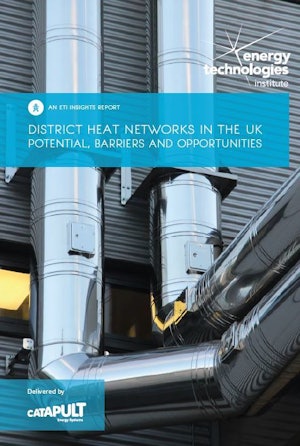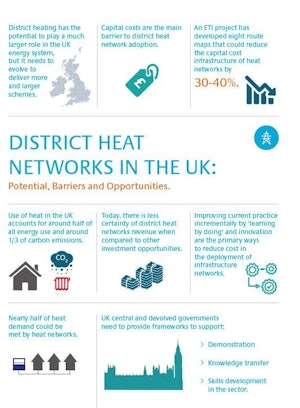District Heat Networks in the UK: Potential Barriers and Opportunities

Given the scale of heat use and waste heat production across the UK, how heat is provided in a future low carbon UK energy system is a critical question. Choices about heating impact on every part of the energy system, from primary energy production, through network infrastructure, to the equipment installed in millions of buildings to provide thermal comfort and hot water. This has therefore been one of the central issues in the work of the Energy Technologies Institute (ETI), whether considering whole systems, energy storage, network transitions, consumers using heat in buildings or building fabric upgrades.
This insight builds upon the findings of the HID project to contextualise how reducing costs of heat network infrastructure can address both stakeholder needs and competitiveness within a whole energy system approach to tackling the heating challenge.
The aim of this work is to provide an evidence based assessment of the innovations most likely to drive down the capital costs of district heating, thereby leading to increased Government confidence in developing policies and governance to reduce the cost of capital for heat networks to levels enjoyed in other countries, and in the UK by other energy networks.
